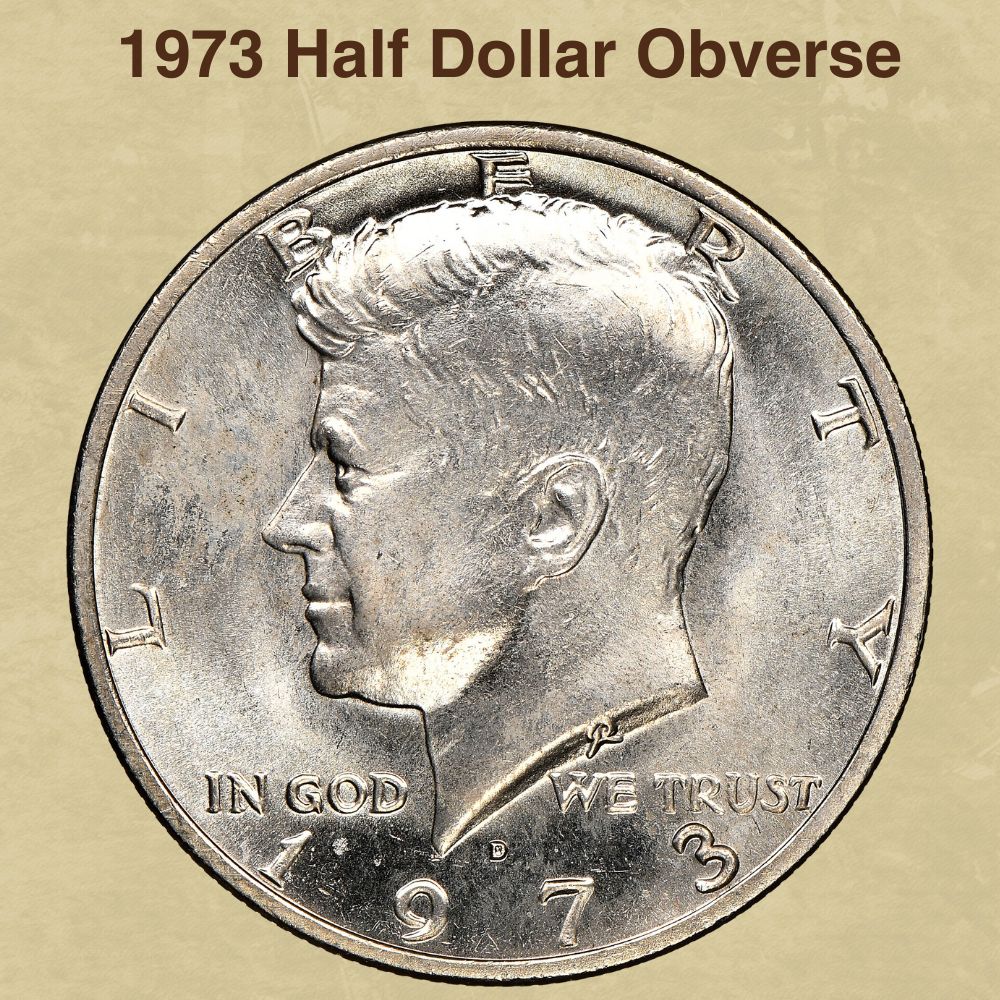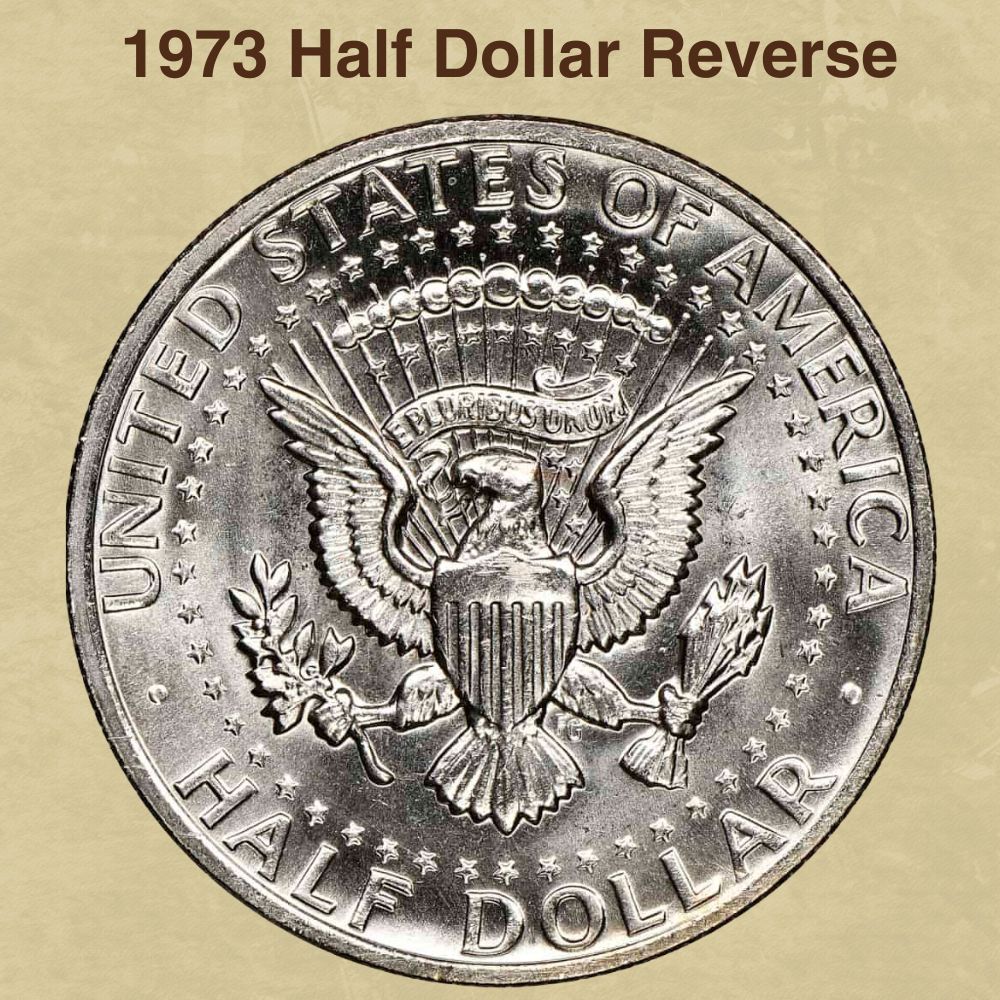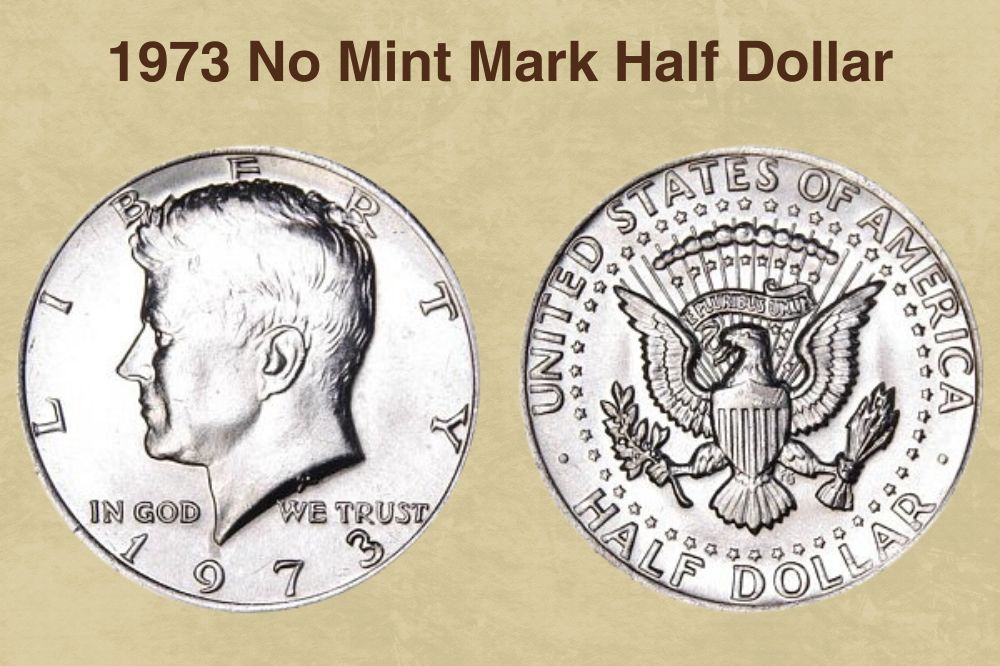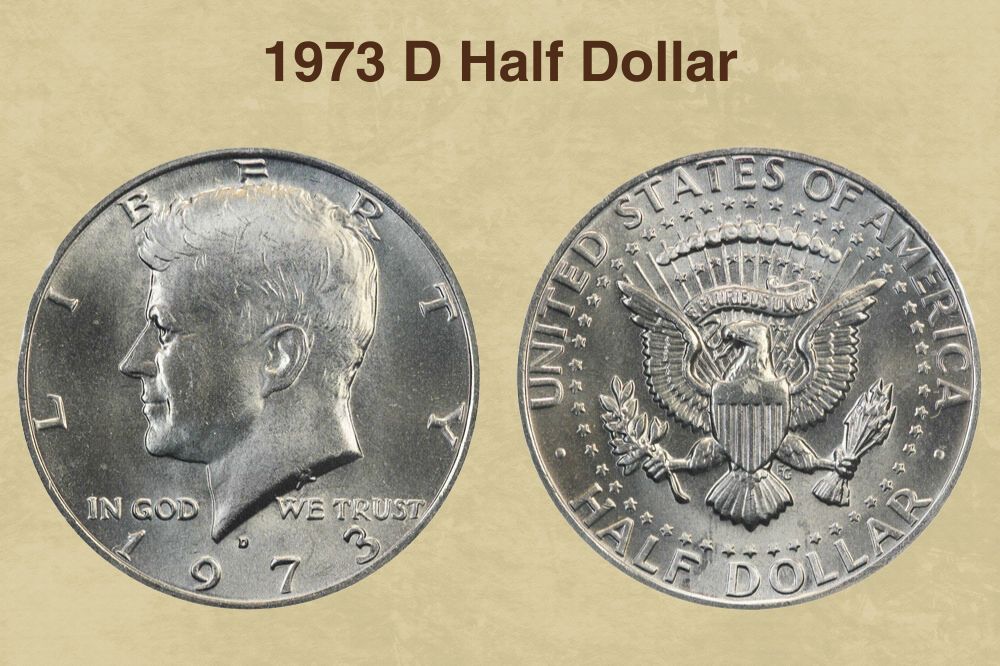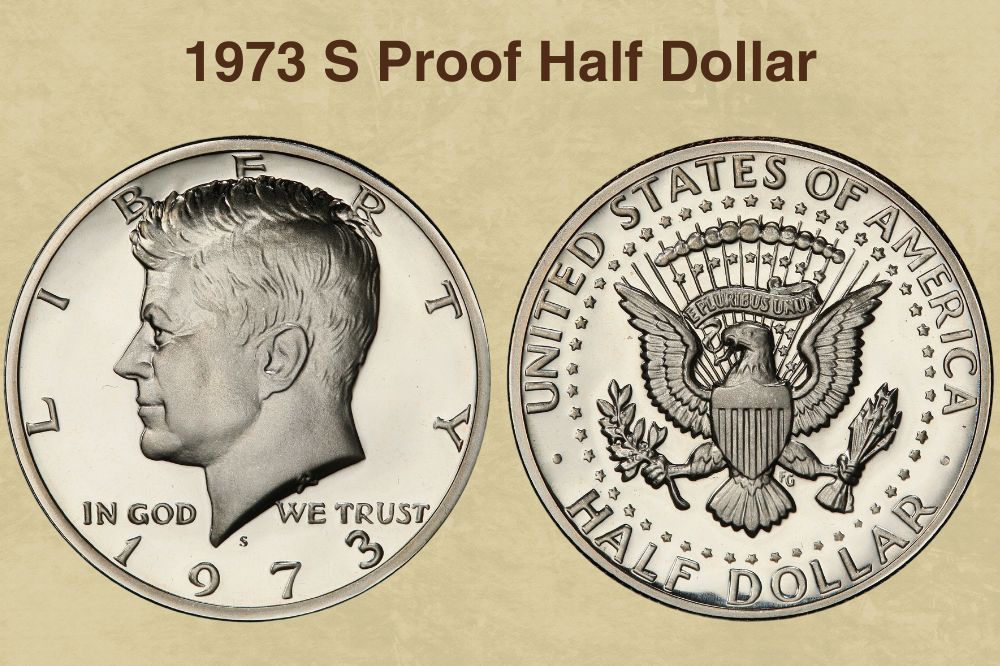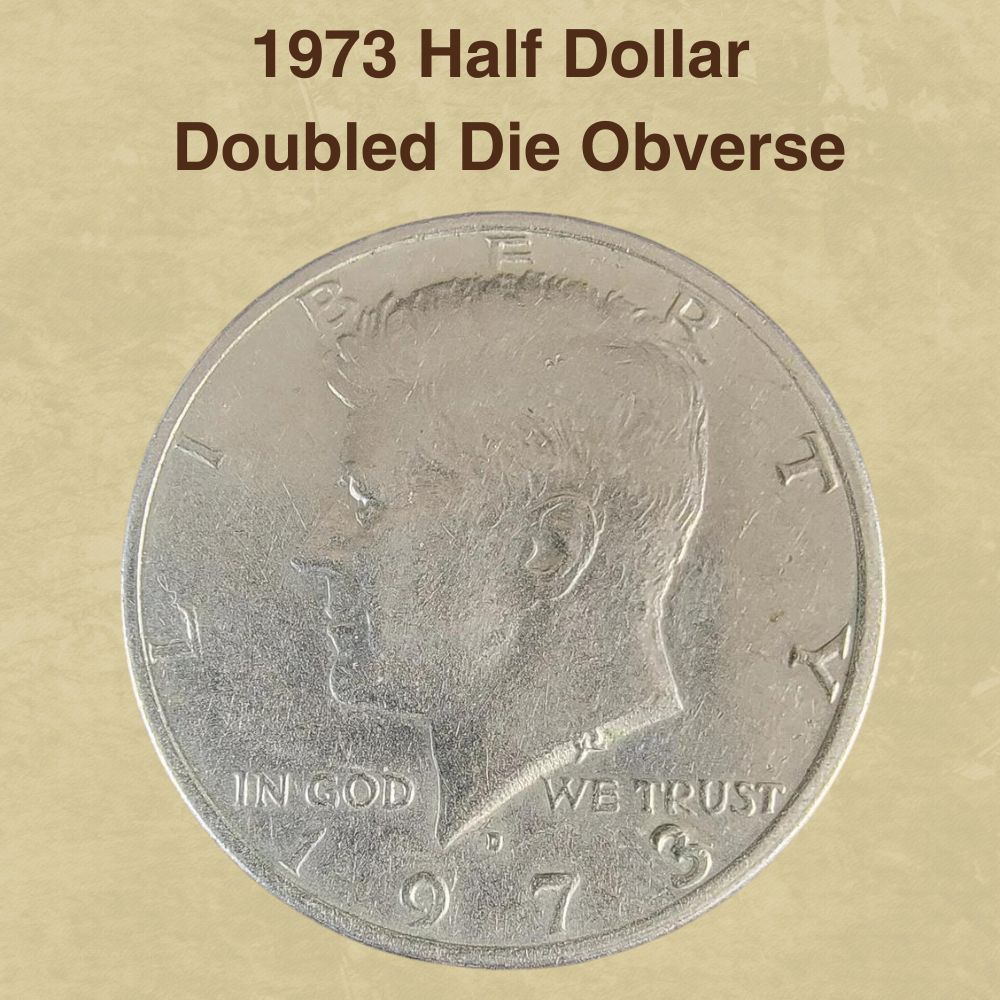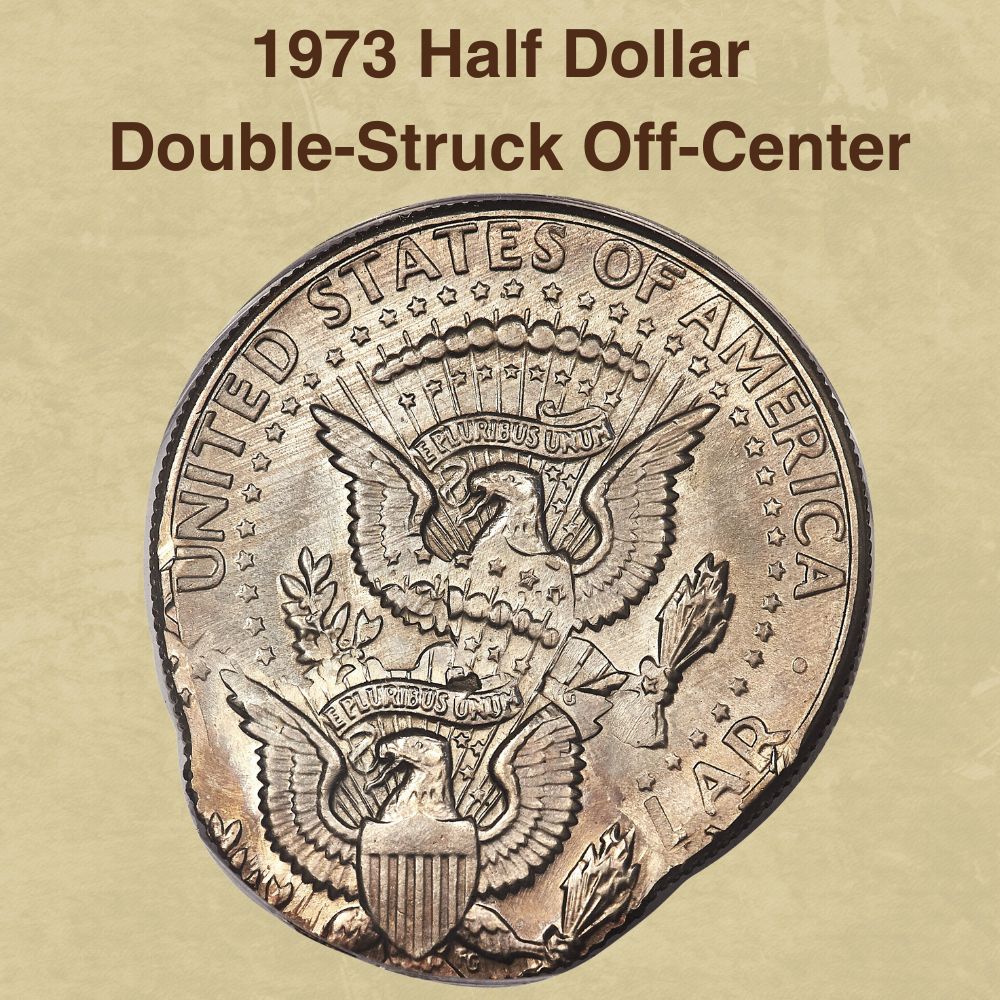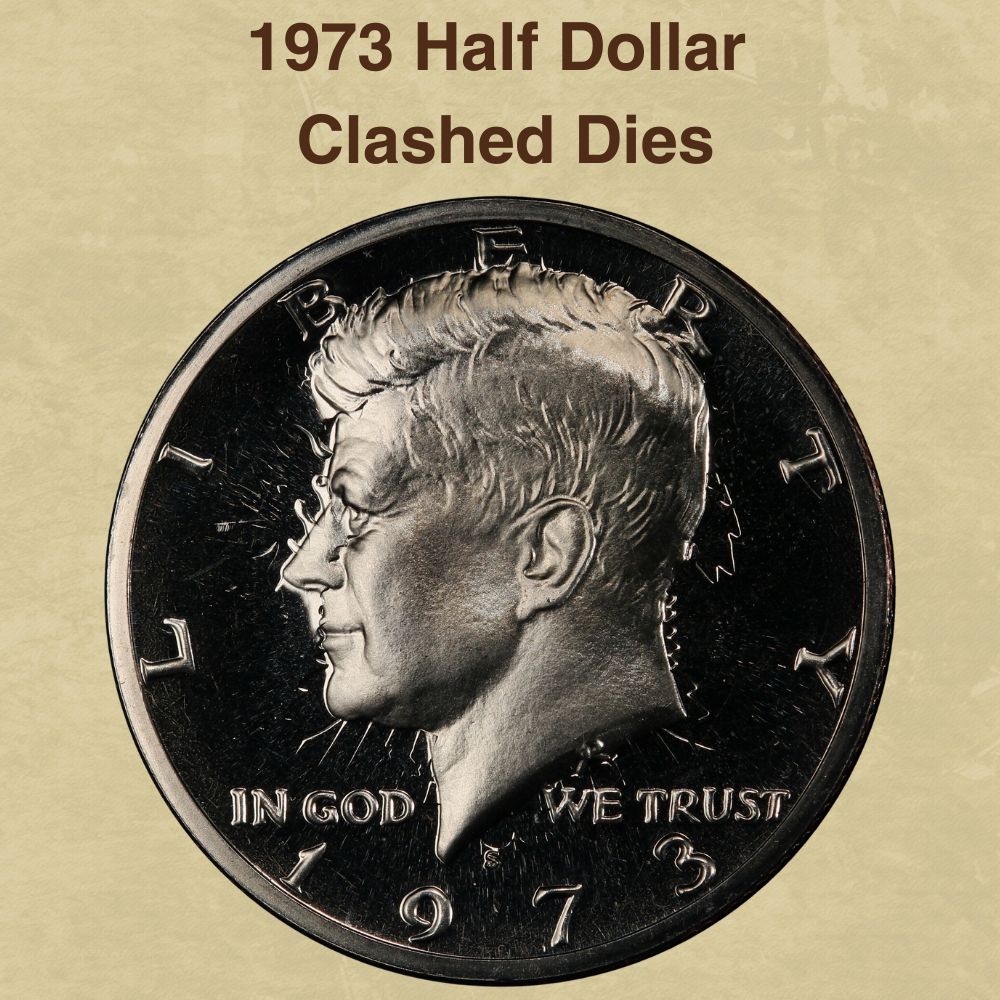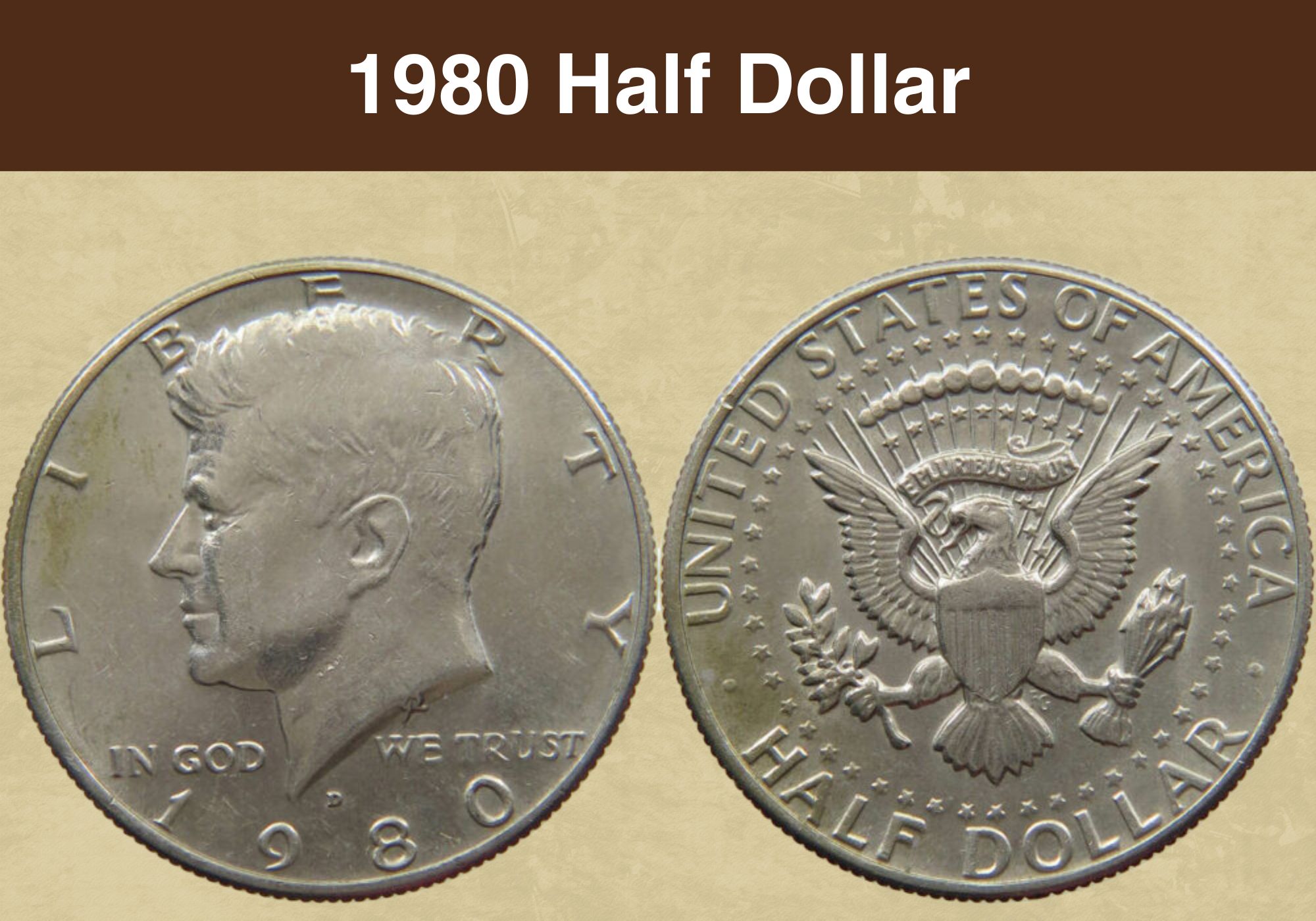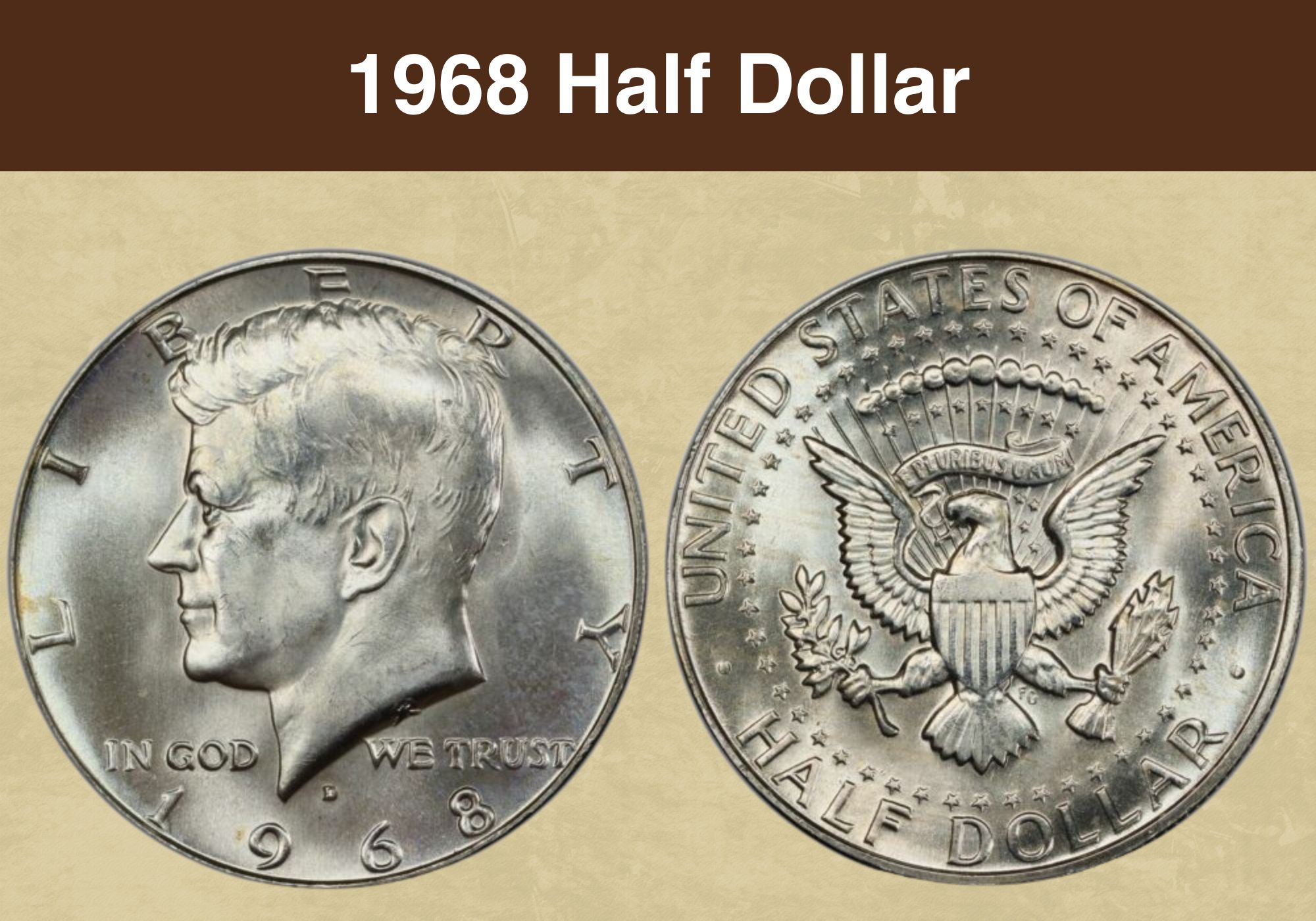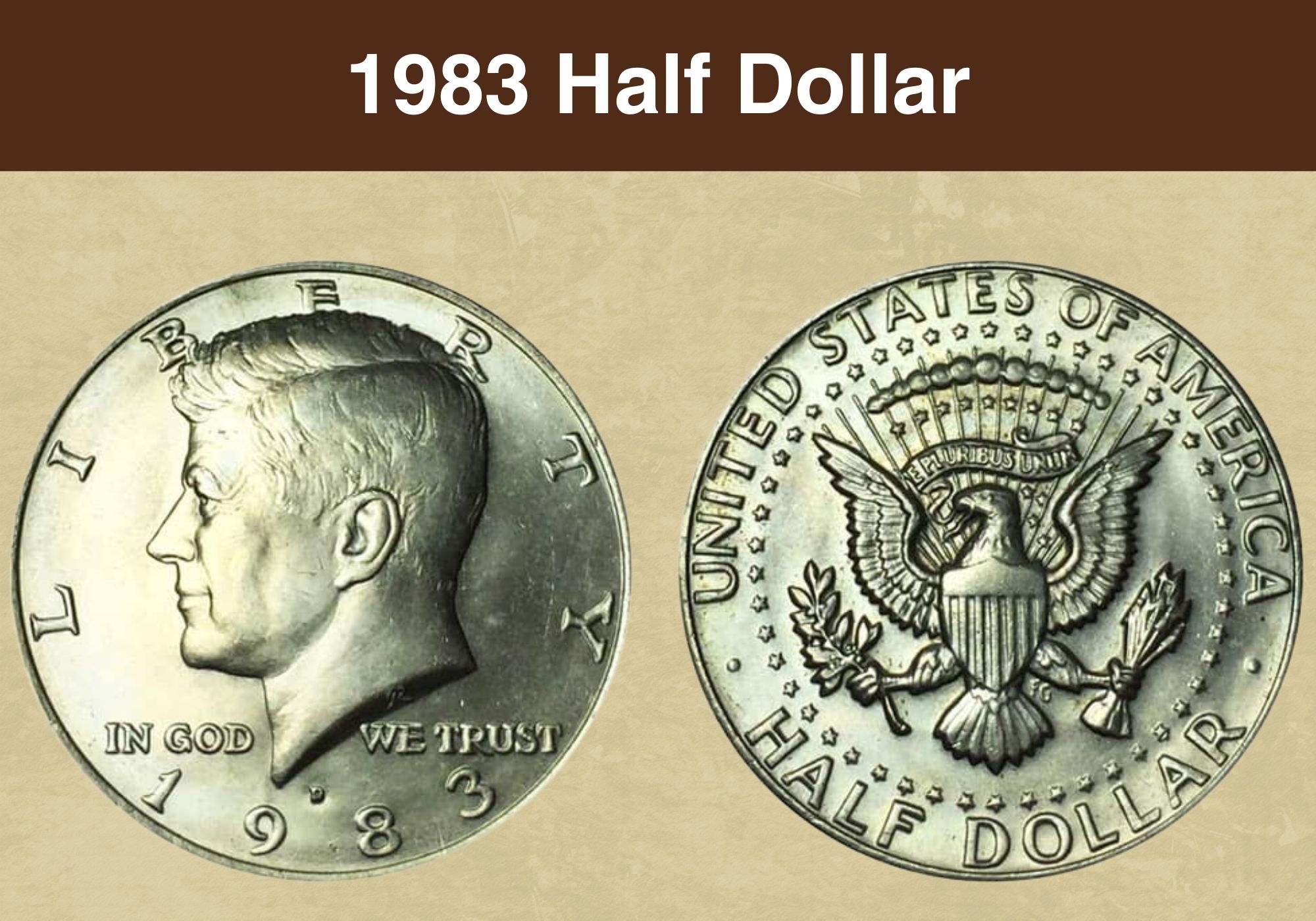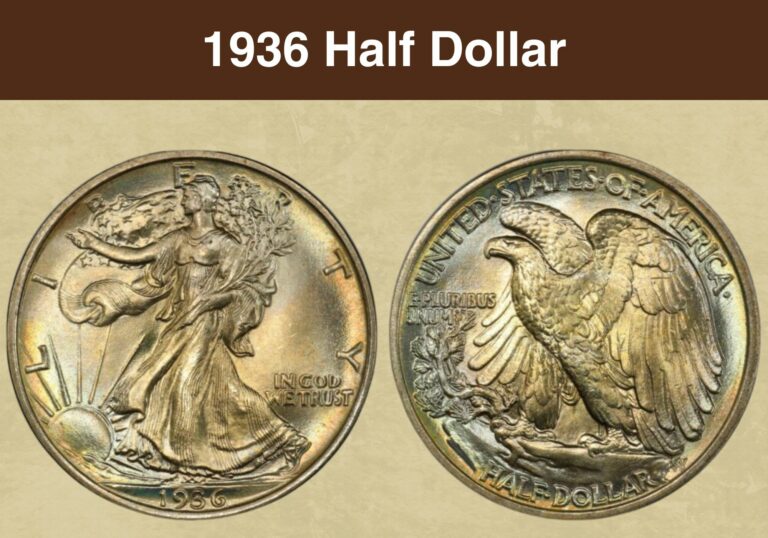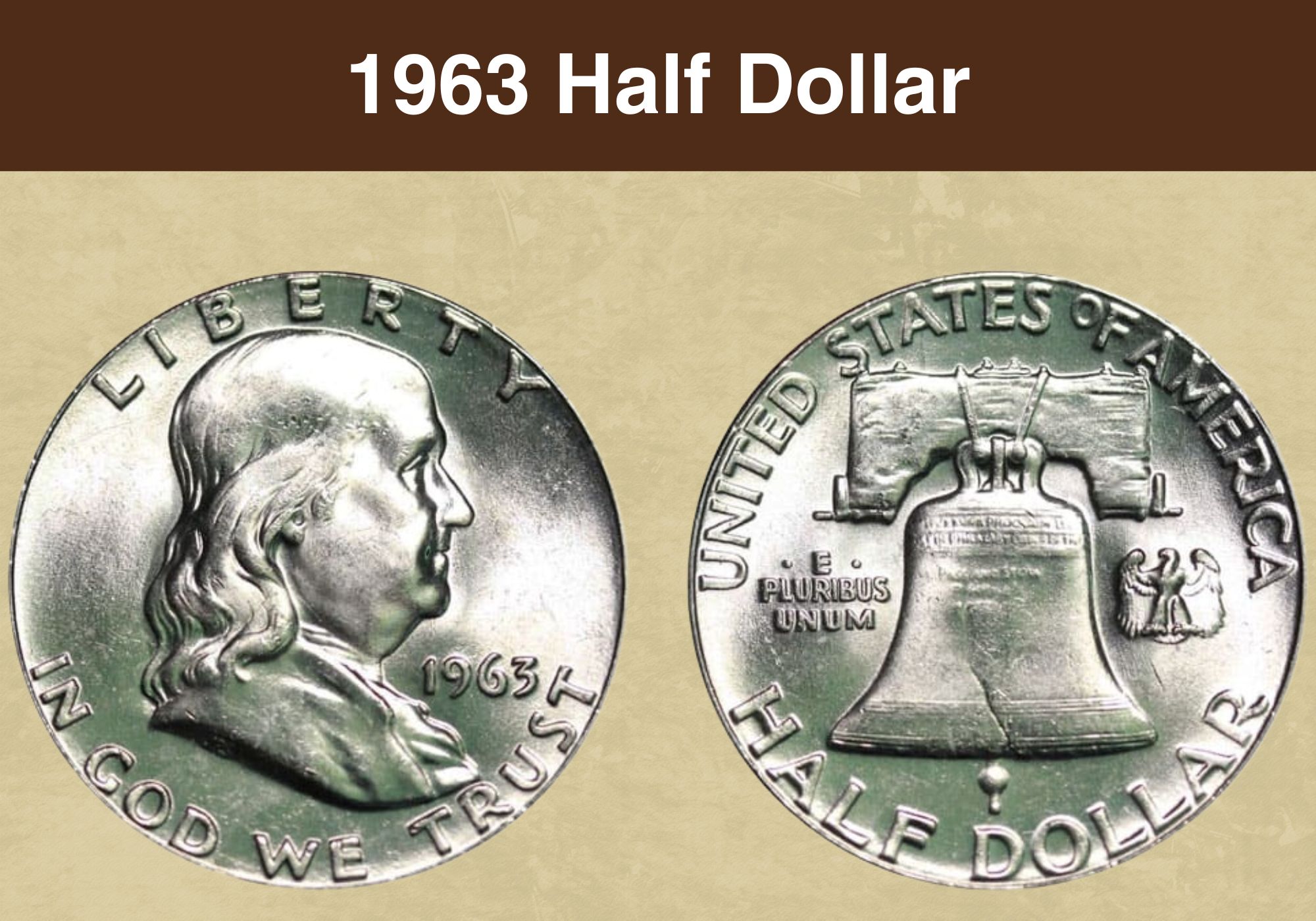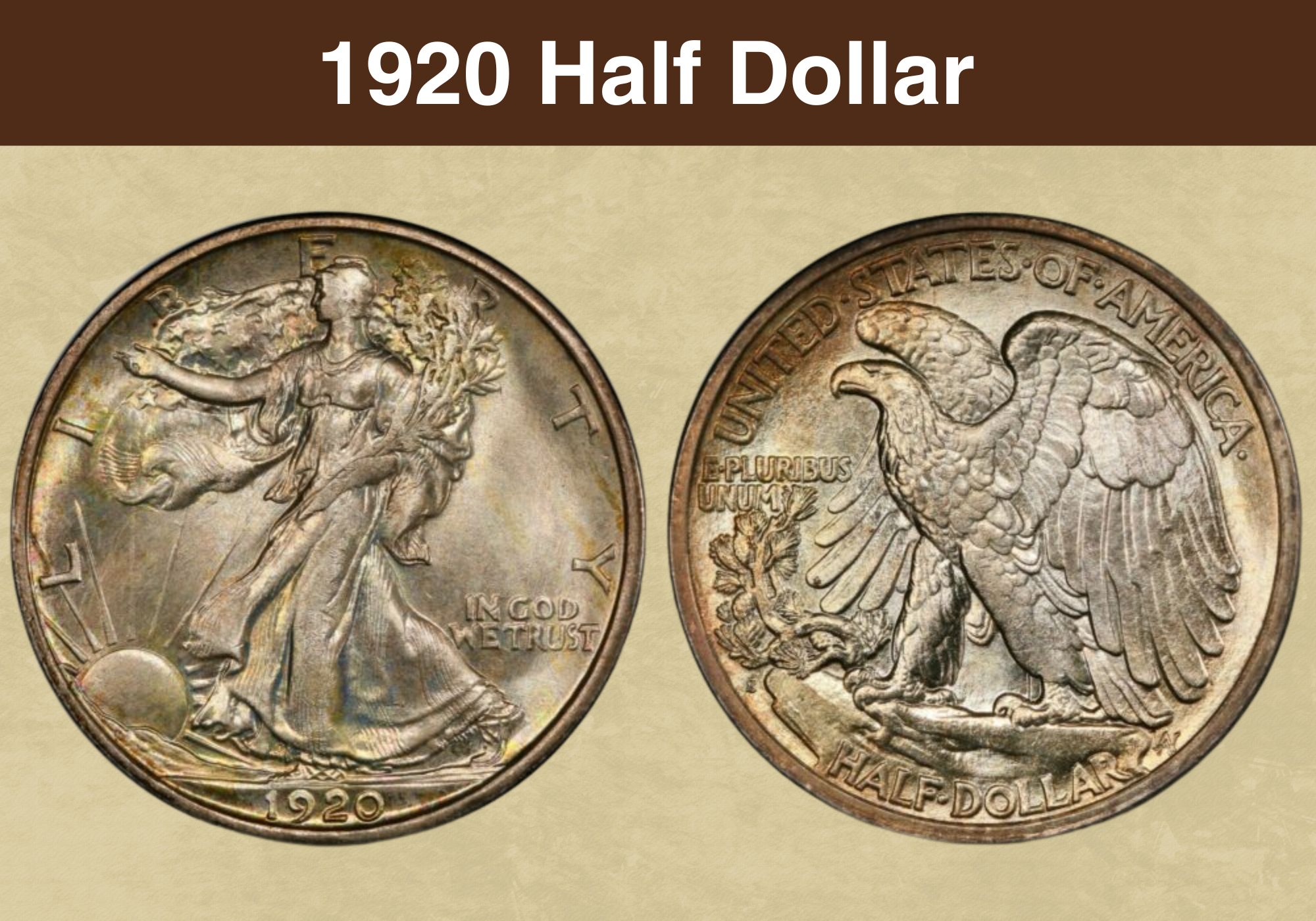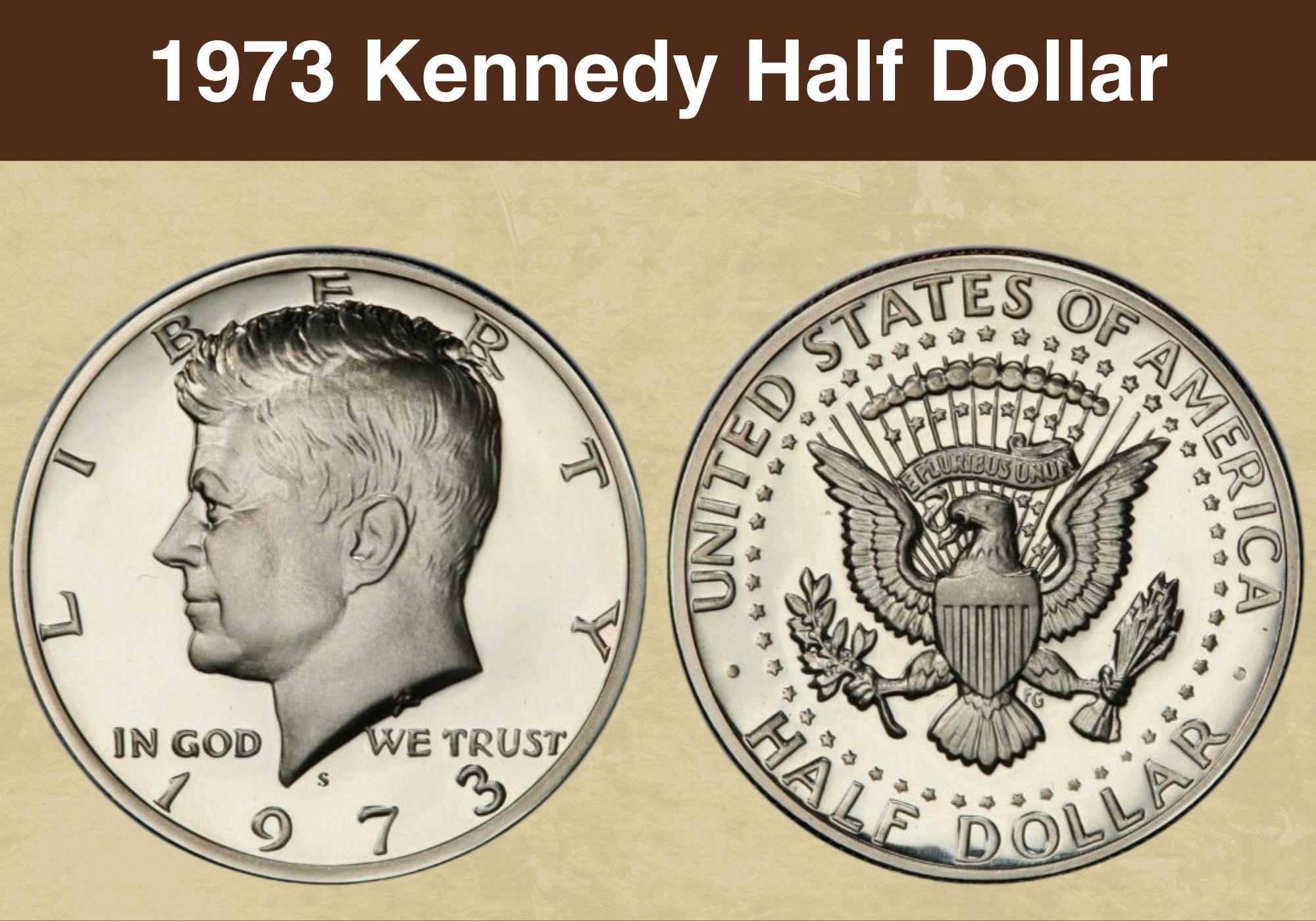
Coin Value Contents Table
- 1973 half dollar value
- The 1973 Half dollar History
- 1973 half dollar Types
- Features of the 1973 Half dollar
- The 1973 Half dollar Grading
- 1973 Kennedy Half dollar Value Guides
- 1973 No Mint mark half-dollar Value
- 1973 D half-dollar Value
- 1973 S half-dollar (proof coin) Value
- Rare 1973 Half-dollar Valuable Error List
- Where to Sell Your 1973 Half Dollar ?
- FAQ about the 1973 Half-dollar
The first Kennedy halves appeared in 1964, a few months after President’s assassination. Their production has continued until these days, becoming the American metal coinage with the highest denomination you can find in use.
The 1973 half-dollar value is relatively low since these modern coins were minted in high quantities, but it still far exceeds their face value. Besides, these coins contain copper instead of initially used silver, significantly decreasing price.
1973 half dollar value |
|||
| Condition | 1973 No mint mark half-dollar | 1973 D half-dollar | 1973 S half-dollar |
| MS 63 | $9 | $9 | $4 |
| PR 65 | / | / | $5 |
The 1973 Half dollar History
The Kennedy half-dollars are the most common American coinage nowadays. The first coins worth 50 cents appeared in 1794, but the US Mint began production of pieces with the 35th President on the obverse almost two centuries later.
1973 half dollar Types |
||
| Location | Year | Minted |
| Philadelphia | 1973 No Mint mark dollar | 64,964,000 |
| San Francisco | 1973 S dollar (proof) | 2,760,339 |
| Denver | 1973 D dollar | 83,171,400 |
| Total | / | 150,895,739 |
The first new silver halves were released in 1964, just after Kennedy’s assassination in Texas. Since there was not enough time to come up with a new design, the idea of using the solution for the previously planned Presidential Medal Series seemed acceptable.
Also read: 13 Most Valuable Franklin Half Dollars Worth Money
Features of the 1973 Half dollar
The US Mint only had a little time to spend on designing Kennedy half-dollar. Therefore, officials accepted the already existing Gilroy Roberts obverse, while Frank Gasparro modified the Presidential Seal for reverse.
The 1973 half dollar Obverse
The 1973 half-dollar obverse contains beautifully designed John F. Kennedy’s profile facing left. It is surrounded by LIBERTY, the word that best describes the essence of the United States.
Interestingly, designer Gilroy Roberts decided to arrange the composition the way the President’s head half-covers the letters B•E•R. On the other hand, the neck truncation separates IN GOD – WE TRUST, while the minting year, 1973, is placed below.
You can also see the initials GR incorporated into the neck cut-off. Coins produced in San Francisco and Denver have the mint mark above the year, completing the composition.
The 1973 half dollar reverse
The reverse of the 1973 half-dollar includes the Presidential Seal with a bald eagle in the center and framed with 50 stars. E Pluribus Unum, an additional 13 stars, and the UNITED STATES OF AMERICA are above its head.
Below the seal is the denomination HALF DOLLAR. You can also see 13 arrows and a branch of olive in the bird’s talons, symbolizing American policy. The designer’s small initials are between its tail and leg.
1973 half dollar Details |
|
| Face value | Fifty cents ($0.50) |
| Shape | Round |
| Compound | Copper and nickel with a ratio of 91.67%: 8.33% (pure copper center with a cupronickel layer) |
| Coin thickness | 0.085 inches (2.15 mm) |
| Coin diameter | 1.205 inches (30.6 mm) |
| Coin weight | 0.4 ounces (11.34 g) |
| Edge | Reded (150 reeds) |
The 1973 half dollar other features
The 1973 Kennedy half-dollar is a fifty-cent coin with a diameter of 1.205 inches (30.6 mm) and 150 reeds. This 0.085 inches (2.15 mm) thick piece is made of a high percentage (91.67%) of copper and some nickel. Its weight is 0.4 ounces (11.34 g).
Also read: 13 Most Valuable Kennedy Half Dollar Worth Money
The 1973 Half dollar Grading
Since coin collecting skyrocketed in the 19th and early 20th centuries, collectors needed a precise grading standard to evaluate each piece’s quality and price. Dr. William Herbert Sheldon established a scale grading from 1 to 70, and it is still actual after adapting in the 1970s.
Most professional grading services use this scale nowadays. However, even non-professionals can somewhat evaluate their coins by following the descriptions this well-known numismatic established.
1973 Kennedy Half dollar Value Guides
The 1973 Kennedy half-dollar mintage was pretty high since three mints produced 150,895,739 of these coins. Most halves came from Denver, while the proof coin production in San Francisco was significantly lower than in the other two.
1973 No Mint mark half-dollar Value
The share of Kennedy half-dollars without the mint mark was 64,964,000 pieces in 1973. Since they are modern, only 50 years old coins, you can expect them to be affordable.
Most collectors consider only pieces in About Uncirculated condition and mint state collectible because they are abundant on the market. The average price range for these halves is:
- $0.70 for half-dollars in AU condition
- $0.75 for half-dollars in MS 60
- MS 61 $6 for half-dollars in MS 61
- MS 62 $7 for half-dollars in MS 62
- MS 63 $9 for half-dollars in MS 63
- MS 64 $10 for half-dollars in MS 64
- MS 65 $28 for half-dollars in MS 65
- MS 66 $70 for half-dollars in MS 66
Only 50-cent coins with the MS 67 grade are more expensive, with an average price of $225. Surprisingly, one of these pieces was sold in 2022 for $1,400.
1973 D half-dollar Value
The mint in Denver had the highest mintage in 1973, with 83,171,400 Kennedy half-dollars from the regular strike. In most cases, you should pay them less than a dollar, depending on the condition. Be prepared that only higher-graded pieces can be more expensive.
For instance, specimens in MS 64 grade cost $10, while those ranking MS 66 are $36. You can expect to set aside more money for MS 67-graded coins, about $250. The most expensive half-dollar with the D mint mark was sold at $1,704 in 2013.
1973 S half-dollar (proof coin) Value
The mint in San Francisco produced only proof half-dollars, precisely 2,760,339 ones. Even though it looks like a low mintage compared to the other two mints, it was actually pretty high for proof coins.
These halves are still relatively affordable despite prices higher than their face value. If you want to add one to your collection, it is enough to prepare $3.50 to $12, depending on their preservation level.
The 1973 S PR half-dollars (CAM) are often slightly more expensive, with average prices from $4 to $16. However, you should always count on exceptions, like one piece with the PR 67 grade and CAM quality paid $165 at an auction in 2018.
As expected, half-dollars with a DCAM feature are the most appreciated among collectors. Therefore, they reach the highest prices in the set, typically from $5 to $26. An estimated value for PR 70-graded halves is significantly higher.
Be prepared that an average piece can cost about $800. The record price at an auction won such one coin after selling at $4,888 in 2006. Interestingly, one collector bought a similar piece with the 65 grade for a surprisingly high $4,370 only three years earlier.
Also read: 11 Most Valuable Half Dollars In Circulation
Rare 1973 Half-dollar Valuable Error List
Coin errors are almost always worth more money than regular pieces, but their price range can vary noticeably. While some 1973 half-dollar errors cost only a few dollars more than those without flaws, others reach hundreds or even thousands of dollars on the market.
Doubled die obverse Error
Sometimes the die strikes a pre-existing already minted coin, resulting in doubled die error. In the case of the 1973 half-dollar, you can find a DOO error coin with a slight doubling of the date or motto.
Such specimens are typically worth a few hundred dollars on the current coin market. Be prepared that such imperfection is not always obvious, and you should use a magnifying glass to notice it. As always, these halves’ price increases with a more prominent doubling.
Five-strike error
Unlike relatively common DDO and DDR Kennedy halves from 1973, those with a quintuple-die error are scarce. After five strikes, they offer an illusion of an infinite reflection. As expected, such specimens are scarce and expensive. The best-paid is the one sold at $4,320 in 2020.
Double-struck off-center error
Sometimes, a metal is improperly fixed and slightly moves between regular multiple strikes during minting. A result is a doubled or tripled coin error with an off-center positioned composition on the obverse or reverse. It comes with a blank area on the surface, making such a piece sought-after among collectors and expensive.
Cud error
Such an error coin appears when the die is too old or damaged, transferring possible imperfections on the half-dollar surface. For instance, a crack or chipped piece on the die leaves a bubble- or blob-like area on the coin surface. You can expect these pieces to cost several tens of dollars, but one such coin reached $200 on eBay.
Obverse die break
A die break coin error occurs after breaking off the die when its piece transfers to the half-dollar surface. It results in a coin with a barely noticeable or visible lump or raised line over the obverse design. It is a rare imperfection, but collectors sometimes find such 1973 Kennedy proofs, estimating their value to be over $1,500.
Clashed dies error
This error typically occurs when two dies (obverse and reverse) strike each other while a planchet is not between them. When such dies struck the next half-dollar planchet, you can see a partial impression of the opposite design on the finished piece. These 1973 half-dollars are uncommon, so you can expect them to be costly.
Broad struck error
In this case, a half-dollar is struck outside the die’s collar, resulting in a broader-than-standard diameter. The common reasons are an improperly centered coin blank or a damaged die. Such pieces are rare and collectible, with a price of over $1,000.
No FG error
The 1973 Kennedy halves always have the designer’s initials, FG, on the reverse, between the eagle’s tail and leg. However, you can sometimes find a piece without them, making this coin scarce.
Half-dollar struck on a wrong planchet
In rare cases, collectors find the cupronickel clad 1973 half dollars struck on the inappropriate planchet. In such a case, you can notice the wrong design mistakenly struck (fully or partially) instead or over the standard Kennedy design.
Such pieces are rare, so you shouldn’t be surprised that the 1973 S half-dollar struck on a quarter planchet exchanged the owners for an impressive $1,920. One collector offered the Kennedy half from 1973 minted on a foreign planchet, probably Liberia cent produced in this mint from 1968 to 1975.
Double denomination error
A double denomination error appears when the Kennedy half-dollar is struck over a previously minted piece of a lower denomination. Such coins are scarce and expensive.
Where to Sell Your 1973 Half Dollar ?
Now that you know the value of your coins, do you know where to sell those coins online easily? Don’t worry, I’ve compiled a list of these sites, including their introduction, pros, and cons.
Check out now: Best Places To Sell Coins Online (Pros & Cons)
FAQ about the 1973 Half-dollar
Are the 1973 Kennedy half-dollars ever rare and valuable?
No, the 1973 Kennedy half-dollars are not particularly rare coins, despite their moderate mintage. In fact, there is a decent chance to come across them in circulation. Only a few perfectly preserved pieces and some errors can cost more than average.
What 1973 Kennedy half-dollars are on a list of expensive coins?
- The 1973 S PR 70 half-dollar with DCAM quality sold at a record price of $4,888 in 2006
- The 1973 S PR 65 half-dollar sold at a record price of $4,370 in 2003
- The 1973 D MS 62 half-dollar sold at a record price of $1,704 in 2013
- The 1973 MS 67 half-dollar sold at a record price of $1,400 in 2022
- The 1973 D AU 55 half-dollar with DOO error sold at a record price of $167 in 2020
- The 1973 S PR 67 half-dollar with CAM quality sold at a record price of $165 in 2018
- The 1973 S PR 69 half-dollar with Miles signature and DCAM quality sold at a record price of $43 in 2020
How much money can you get for the 1973 No Mint mark Kennedy half-dollar?
The 1973 Kennedy half-dollars are considered modern coins, so you can expect them to be affordable. It is enough to prepare $0.70 to $38 for one, depending on its appearance. Only the best-preserved specimens in MS 67 grade come with higher prices of at least $225.
What Kennedy half-dollars are the best-paid ever?
- 1964 SP 68 half-dollar from the SMS – $156,000
- 1964 PR 69 half-dollar with DCAM quality and accented hair error – $45,600
- 1967 SP 69 half-dollar from the SMS with DCAM quality – $31,200
- 1964 D MS 68 half-dollar – $22,325
- 1968 S PR 70 half-dollar with DCAM quality – $21,600

